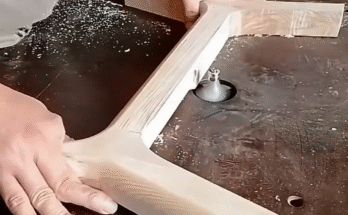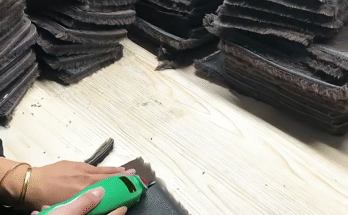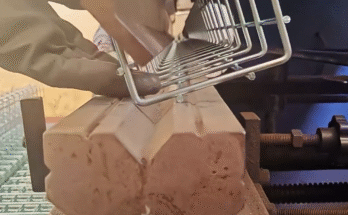Installing a granite door cover, also known as a door surround or architrave, adds a touch of elegance, durability, and architectural sophistication to any entryway. This process requires precision, careful handling of heavy materials, and a keen eye for detail to ensure a flawless and lasting finish. Here’s a step-by-step guide to achieving a stunning granite door cover installation.
Step 1: Planning, Measurement, and Material Preparation 📐
Meticulous planning is the cornerstone of a successful granite installation.
- Accurate Measurements: Carefully measure the existing door frame opening (width and height) and the wall thickness. Also, determine the desired projection and width of the granite door cover elements (jambs, header, and any decorative pieces).
- Design Confirmation: Confirm the design of the granite door cover, including profiles, finishes, and any specific cuts or angles required.
- Material Sourcing: Order the granite pieces from a reputable supplier, ensuring they are cut to precise specifications. Allow for a small margin of error (e.g., 1/8 inch) for adjustments.
- Site Preparation: Ensure the wall surface around the door frame is clean, dry, plumb, and structurally sound. Any existing trim or loose debris must be removed.
- Tool Gathering: Assemble all necessary tools, including measuring tapes, levels (long and short), squares, mallets, shims, strong adhesive (epoxy or construction adhesive suitable for stone), grout/sealant, mixing tools, and personal protective equipment (PPE).
Step 2: Dry Fitting and Layout 📏
Before applying any adhesive, a dry fit is crucial to confirm dimensions and plan the installation sequence.
- Unpack and Inspect: Carefully unpack all granite pieces and inspect them for any damage, chips, or inconsistencies.
- Positioning: Temporarily position the granite jamb pieces (vertical sides) and the header piece (horizontal top) around the door frame.
- Check Fit and Level: Use a level to ensure all pieces are plumb and level. Check for gaps between the granite and the wall, and between the granite pieces themselves.
- Marking: Lightly mark the wall where the granite pieces will sit. This provides a guide for adhesive application.
- Adjustments: If any minor adjustments are needed (e.g., slight trimming of the wall surface or shimming), perform them now. For granite, significant adjustments usually require professional stone cutting.
Step 3: Preparing the Adhesive and Backing 🛠️
The right adhesive ensures a secure and lasting bond.
- Adhesive Selection: Choose a high-quality, strong adhesive specifically designed for bonding heavy stone to the substrate (e.g., a two-part epoxy or a heavy-duty construction adhesive).
- Mixing (if applicable): If using a two-part epoxy, mix it thoroughly according to the manufacturer’s instructions, ensuring a consistent, lump-free mixture.
- Back Buttering: Apply a generous, even layer of adhesive to the back of each granite piece using a notched trowel. This “back buttering” technique ensures maximum coverage and adhesion.
- Wall Application (Optional): For very large or heavy pieces, you may also apply a thin layer of adhesive to the marked areas on the wall.
Step 4: Installing the Vertical Jamb Pieces ⬆️
Begin with the side pieces, ensuring they are perfectly plumb.
- First Jamb: Carefully lift and position the first granite jamb piece onto the marked area on the wall, aligning it with the door frame.
- Press and Secure: Press the granite piece firmly into the adhesive. Use a rubber mallet to gently tap the surface, ensuring full contact and even distribution of the adhesive.
- Leveling and Plumbing: Immediately use a level to check for plumb (vertical straightness) and adjust as needed. Use shims if necessary to achieve perfect alignment and support the piece while the adhesive sets.
- Repeat for Second Jamb: Install the second jamb piece on the opposite side, following the same process. Ensure both jambs are parallel and at the correct distance from each other.
Step 5: Installing the Horizontal Header Piece ➡️
The header piece connects the two jambs and completes the frame.
- Adhesive Application: Apply adhesive to the back of the granite header piece.
- Positioning: Carefully lift the header piece and position it on top of the installed jamb pieces. Ensure it is centered and aligns perfectly with the jambs.
- Support and Leveling: Support the header piece securely. Use a level to ensure it is perfectly level. Shims or temporary supports may be needed until the adhesive begins to set.
- Joint Alignment: Pay close attention to the joints where the header meets the jambs. They should be tight and consistent.
Step 6: Curing, Sealing, and Finishing ✅
The final steps ensure durability and a polished look.
- Curing Time: Allow the adhesive to cure fully according to the manufacturer’s recommendations. This typically takes 24-72 hours, during which the granite should not be disturbed.
- Joint Treatment: Once the adhesive is cured, fill any visible joints or gaps between the granite pieces and between the granite and the wall using a color-matched grout or sealant specifically designed for natural stone. Tool the joints for a clean finish.
- Cleaning: Carefully clean any excess adhesive or grout from the granite surface using a damp sponge or cloth before it fully hardens.
- Sealing: Apply a high-quality granite sealer to all exposed surfaces of the door cover. This protects the granite from stains, moisture, and enhances its natural luster. Follow the sealer manufacturer’s instructions for application and reapplication frequency.
- Final Inspection: Conduct a thorough final inspection to ensure all pieces are securely installed, level, plumb, and that the finish is pristine.
The Enduring Beauty of Granite 🌟
Installing a granite door cover is an investment in both aesthetics and longevity. By following these steps, you can create a grand and enduring entrance that significantly enhances the curb appeal and value of any property.



